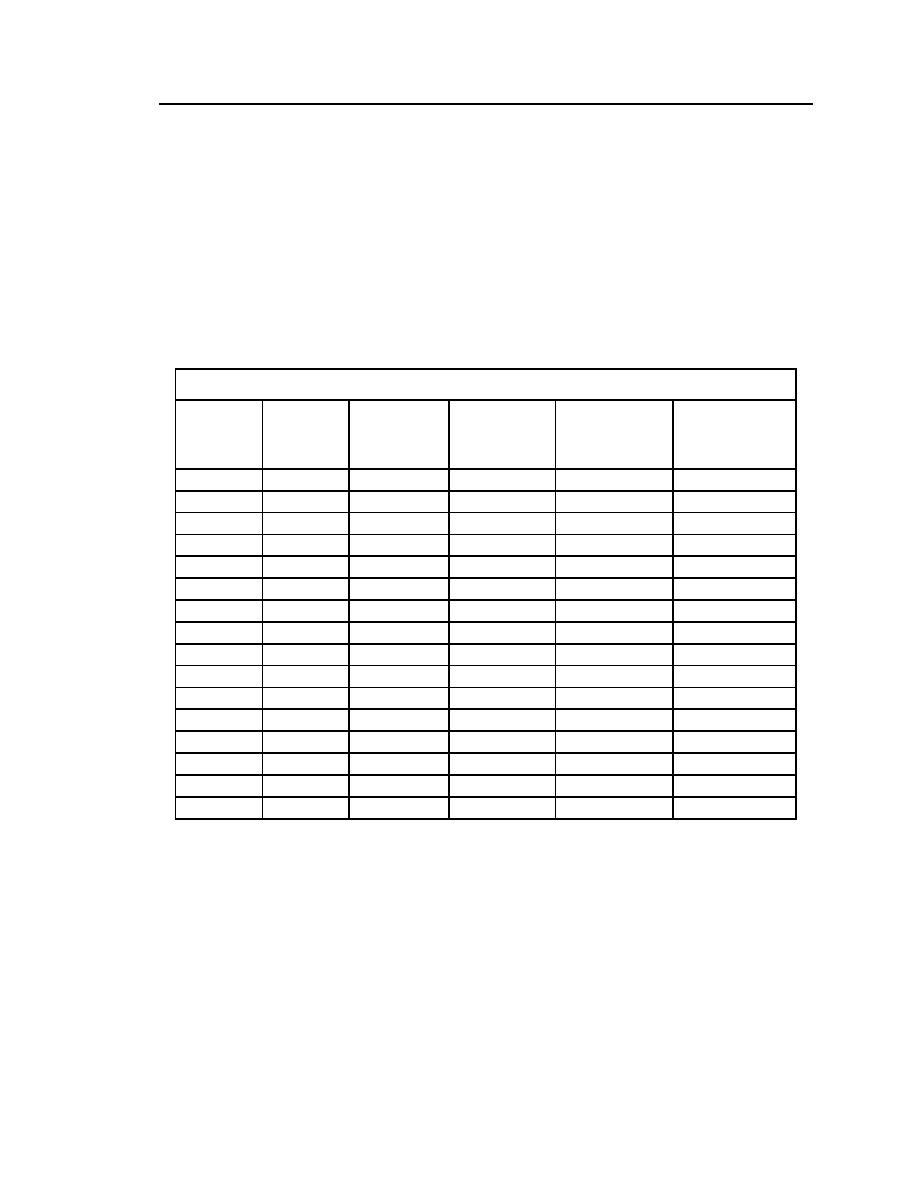
Army Aircraft Icing
43
E. Icing accident/incident rate.
Table 20 shows the number of aircraft accidents/incidents and the accident/
incident rate from FY85 to FY99. The total accident/incident rate ranged from
2.35 to 3.13 accidents/incidents per 1000 hrs, with the average being 2.66
accidents/incidents per 1000 hrs. The icing accident/incident rate was signifi-
cantly lower, ranging from 0.00 to 0.03 accidents/incidents per 1000 hrs. The
average was only 0.01 accident/incident per 1000 hrs, or one accident/incident
every 100,000 flying hours.
Table 20. Aircraft accident/incident rates (FY85FY99).
Icing
Total
Total flying
Icing
Total
accident/incident accident/incident
hours
accidents/
accidents/
rate
rate
000
incidents
incidents
Fiscal year
#/1000 hours
#/1000 hours
FY85
4636
24
1532
3.03
0.02
FY86
5091
27
1628
3.13
0.02
FY87
4931
32
1705
2.89
0.02
FY88
4783
20
1742
2.75
0.01
FY89
4494
8
1685
2.67
0.00
FY90
4355
17
1697
2.57
0.01
FY91
3272
13
1300
2.52
0.01
FY92
3502
9
1400
2.50
0.01
FY93
3327
7
1299
2.56
0.01
FY94
3244
8
1278
2.54
0.01
FY95
3219
24
1204
2.67
0.02
FY96
2672
28
1082
2.47
0.03
FY97
2320
17
953
2.43
0.02
FY98
2092
6
891
2.35
0.01
FY99
2143
15
913
2.35
0.02
Total
54,081
255
20,309
2.66
0.01
Army Safety Center data discussion and conclusions
The Army Safety Office data indicate that icing is not a high-frequency
safety problem. However, it occurs remarkably often considering the strict
regulations against taking off with ice on the aircraft or flying into icing condi-
tions. It was the likely cause of over ,000,000 in damage and the loss of five
lives. Better in-flight icing detection and pre-flight deicing capabilities would
help to mitigate the risks of icing-related incidents and accidents.



 Previous Page
Previous Page
